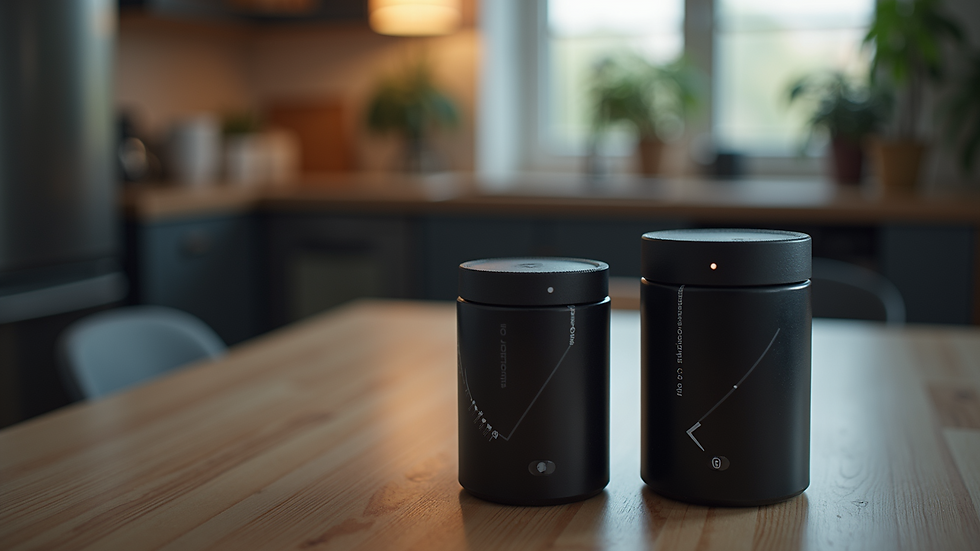How to Effectively Detect Radon Levels at Home
- Frank Talarico
- Sep 22
- 3 min read
Radon is a naturally occurring radioactive gas that can seep into homes through cracks and openings in the foundation. It is colorless, odorless, and tasteless, making it impossible to detect without proper testing. Prolonged exposure to high radon levels can pose serious health risks, including lung cancer. Therefore, understanding how to detect radon levels in your home is crucial, especially during real estate transactions or when you want to ensure a safe living environment.
Understanding Radon Detection Techniques
Radon detection techniques have evolved over the years, offering homeowners and buyers reliable ways to measure radon concentrations. There are two main categories of radon tests: short-term and long-term. Each has its advantages depending on the urgency and accuracy required.
Short-term tests typically last from 2 to 7 days. They are useful for quick assessments, especially during home inspections or real estate transactions.
Long-term tests last more than 90 days and provide a more accurate average radon level over time, accounting for fluctuations due to weather and seasonal changes.
Common radon detection devices include charcoal canisters, alpha track detectors, and continuous radon monitors. Charcoal canisters absorb radon and are analyzed in a lab, while alpha track detectors record radon exposure over time. Continuous monitors provide real-time radon level readings and are often used by professionals.

Choosing the Right Radon Detection Method
When selecting a radon detection technique, consider the following:
Purpose of testing: For real estate transactions, short-term tests are common due to time constraints.
Budget: Short-term tests are generally less expensive, but long-term tests offer more reliable data.
Accuracy needs: Long-term tests reduce the risk of false negatives or positives caused by temporary radon level spikes.
Professional radon testers often use continuous radon monitors for the most precise results. These devices can detect radon fluctuations hourly, helping identify problem areas in the home.
How do you check for radon in your house?
Checking for radon in your house involves a few straightforward steps that anyone can follow, but professional testing is recommended for the most accurate results.
Purchase a radon test kit: Available online, at hardware stores, or through certified radon testing companies.
Place the test kit: Position the device in the lowest lived-in level of your home, such as the basement or first floor. Avoid kitchens, bathrooms, and drafty areas.
Follow instructions carefully: Each test kit comes with specific guidelines on placement and duration.
Send the kit to a lab: After the testing period, mail the kit to the designated laboratory for analysis.
Review results: The lab will provide radon levels in picocuries per liter (pCi/L). The EPA recommends action if levels exceed 4.0 pCi/L.
For more precise results, consider hiring a certified radon professional who uses advanced equipment and can provide mitigation advice if needed.

Interpreting Radon Test Results and Next Steps
Once you receive your radon test results, understanding what they mean is essential for deciding your next steps.
Radon levels below 2.0 pCi/L: Generally considered safe, but retesting every few years is recommended.
Radon levels between 2.0 and 4.0 pCi/L: Consider retesting or taking mitigation measures, especially if you have children or smokers in the home.
Radon levels above 4.0 pCi/L: Immediate action is advised to reduce radon levels.
Mitigation techniques include sealing cracks in the foundation, improving ventilation, and installing radon reduction systems such as sub-slab depressurization. These systems use a vent pipe and fan to draw radon from beneath the house and release it outside.

Why Regular Radon Testing is Important
Radon levels can change over time due to factors like weather, home renovations, and changes in ventilation. Regular testing ensures that your home remains safe. Testing is especially important:
Before buying or selling a home.
After major renovations or foundation repairs.
If you notice increased radon levels in your area.
By staying proactive, you can protect your family’s health and maintain property value.
For detailed guidance on detecting radon levels, consult professional radon testing services that specialize in residential homes.
Taking Action to Protect Your Home and Family
If your radon test indicates elevated levels, don't delay in taking action. Hiring a certified radon mitigation professional ensures that the problem is addressed effectively. Mitigation systems are typically affordable and can significantly reduce radon exposure.
Remember, radon is a silent threat, but with the right knowledge and tools, you can keep your home safe. Regular testing, proper mitigation, and staying informed are key steps in maintaining a healthy living environment.
By understanding and applying these radon detection techniques, you can confidently manage radon risks in your home and during real estate transactions.



Comments